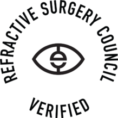What is LASIK?

LASIK is a surgical procedure that can allow you to experience greater visual freedom and reduced dependency on visual aids like glasses and contact lenses. LASIK can correct refractive errors, like nearsightedness, farsightedness, and astigmatism, by reshaping tissue in the cornea, which is the clear covering of the front of the eye.
LASIK is just one method of refractive vision correction, and its long-term results have proven to be very stable. At VisionFirst Eye Center, we are proud to be the premier provider of LASIK surgery for the Birmingham, Alabama, area.
LASIK in Birmingham
LASIK, a revolutionary vision correction procedure, has allowed countless individuals to experience greater visual freedom. At VisionFirst Eye Center, we are proud to offer this life-changing procedure, allowing you to enjoy the world with impeccable clarity and reduce your dependence on glasses and contact lenses.
How Does LASIK Work?
LASIK works by reshaping the cornea, the transparent front surface of the eye. The cornea plays a crucial role in focusing light onto the retina, allowing you to see clearly.
When your cornea has imperfections in its shape, or your eye is too short or too long, it can lead to vision issues called refractive errors. LASIK corrects these imperfections, improving your vision and allowing you to experience reduced dependence on visual aids like contact lenses and glasses.
How Do I Get LASIK?
The process to get LASIK is relatively straightforward but requires many necessary steps to ensure the procedure is safe and effective. Here are the steps to getting LASIK:
LASIK Consultation
Before undergoing LASIK, you’ll need to have a LASIK consultation with your eye doctor at VisionFirst in Birmingham, Alabama, to ensure you are a good candidate for the procedure. This will be a full examination, including a comprehensive evaluation of your eyes and your vision goals.
During this consultation, your eye doctor will measure your vision, glasses prescription, and corneal thickness, as well as address any questions or concerns you may have. They will also ensure your eyes are healthy and free from any eye conditions that could complicate your recovery from the procedure.
Your eye doctor will also want to know about your vision goals and lifestyle to determine if LASIK is the right option for you. This assessment helps your eye doctor determine whether you are a suitable candidate for laser vision correction.
Determining that you are a good candidate for LASIK ensures that the procedure is more likely to be safe and effective. If your eye doctor confirms that you are a good candidate for the procedure, you will be able to schedule your LASIK surgery date.
The LASIK Procedure
Once you’re fully prepared, the LASIK procedure itself is a quick and easy process. Your skilled LASIK surgeon will start by numbing the front surface of your eyes with anesthetic eye drops to ensure you are comfortable during the procedure.

Then, they will create a thin flap on the cornea’s surface, which will be placed out of the way to reveal the inner layers of the cornea. Next, your LASIK surgeon will gently reshape the underlying tissue using a laser.
Once this is complete, then reposition the flap for healing without stitches. This precise reshaping of the cornea corrects refractive errors, allowing light to focus properly on the retina.
Recovery and Follow-Up
Most LASIK patients experience improved vision within hours or days after the procedure. However, in some cases, vision stabilizes over a few weeks.
Your eye doctor will provide you with a list of instructions to follow to aid in your recovery. It is important to follow these instructions carefully.
You may also need to use prescription eye drops for a few weeks to reduce the chances of complications. VisionFirst Eye Center provides thorough post-operative care to ensure your eyes heal correctly and that you achieve the best results possible.
You will need to visit your eye doctor for a few follow-up visits. During these visits, your eye doctor will test your vision and ensure your eyes are healing well.
Check out our YouTube playlist to see the most recent patient LASIK journeys.
What are the Benefits of LASIK?
LASIK offers qualified candidates many benefits, including:
Crisp, Clear Vision
After LASIK, the majority of patients enjoy clearer vision than they ever had before. This is because the procedure corrects your specific refractive errors, sometimes offering even greater customization than glasses and contacts. You can look forward to decades of making vivid, clear memories and doing all your favorite activities in high-definition.
Freedom From Glasses and Contacts
The hassles of visual aids can be incredibly frustrating, from needing to perform complex contact lens cleaning routines to constantly wiping smudges off of your glasses. You can maximize your time and energy with LASIK, as you’ll wake up with clear vision every day that requires no maintenance or extra steps. This can also help increase your comfort, as wearing contact lenses for long periods of time can be irritating to your eyes, and having glasses sit on your face all day can be uncomfortable, especially in hotter environments like Alabama.
Ease with Travel
When you’re stressed about making flights and booking accommodations for travel, the last thing you want to worry about is whether your vision will be clear enough to enjoy your destination. After LASIK, you won’t need to make extra room in your carry-on for contacts, solution, glasses, or cases. Instead, you can take in all the sights with clear, vibrant vision and truly enjoy everything your travels have to offer.
Great for Active Lifestyles
If you live an active lifestyle or play sports, LASIK can help you boost your performance. With enhanced visual acuity and no frames getting in the way, you can increase your response time and precision when hitting that ball or making that basket. You also won’t need to worry about making sure you have the right prescription equipment for things like skiing, swimming, or biking.
Saves You Money
Over time, the costs of glasses and contact lenses start to add up. Most patients spend around $500 a year on things like repairs, replacements, and prescription updates. While LASIK has a higher upfront cost, financing programs can help you fit it into your budget by paying in lower increments over time. Eventually, the cost of LASIK ends up being less than the ongoing costs of glasses and contacts year after year.
How Do I Know if LASIK is Right For Me?
Determining whether LASIK is right for you begins with the initial screening and comprehensive examination at VisionFirst Eye Center. Our team of experienced LASIK surgeons will assess your eye health and refractive errors to make an informed recommendation.
If LASIK is suitable for your vision needs, you can look forward to a life without the hassle of glasses or contact lenses.
Can I Afford LASIK?
We understand that affordability is a concern for many individuals considering LASIK. At VisionFirst Eye Center, we offer financing options through CareCredit, which provides extended payment plans to fit virtually any budget. Additionally, we accept Health Savings Accounts (HSAs) and Flexible Spending Accounts (FSAs) to help you cover the cost of LASIK.
It’s worth noting that laser vision correction is considered a cosmetic elective procedure and is typically not covered by insurance companies. However, we are committed to making LASIK accessible, and we may have discounts available based on your vision insurance or occupation. Be sure to inquire about the various payment options during your consultation.
Don’t let vision problems hold you back from enjoying a clearer, more vibrant life. LASIK at VisionFirst Eye Center offers a life-changing solution to help you see the world with newfound clarity. Schedule your complimentary initial screening today to take the first step towards a brighter future with LASIK.
Are you interested in learning if you may be a candidate for LASIK? Schedule a LASIK consultation at VisionFirst Eye Center in Birmingham, AL, today!










